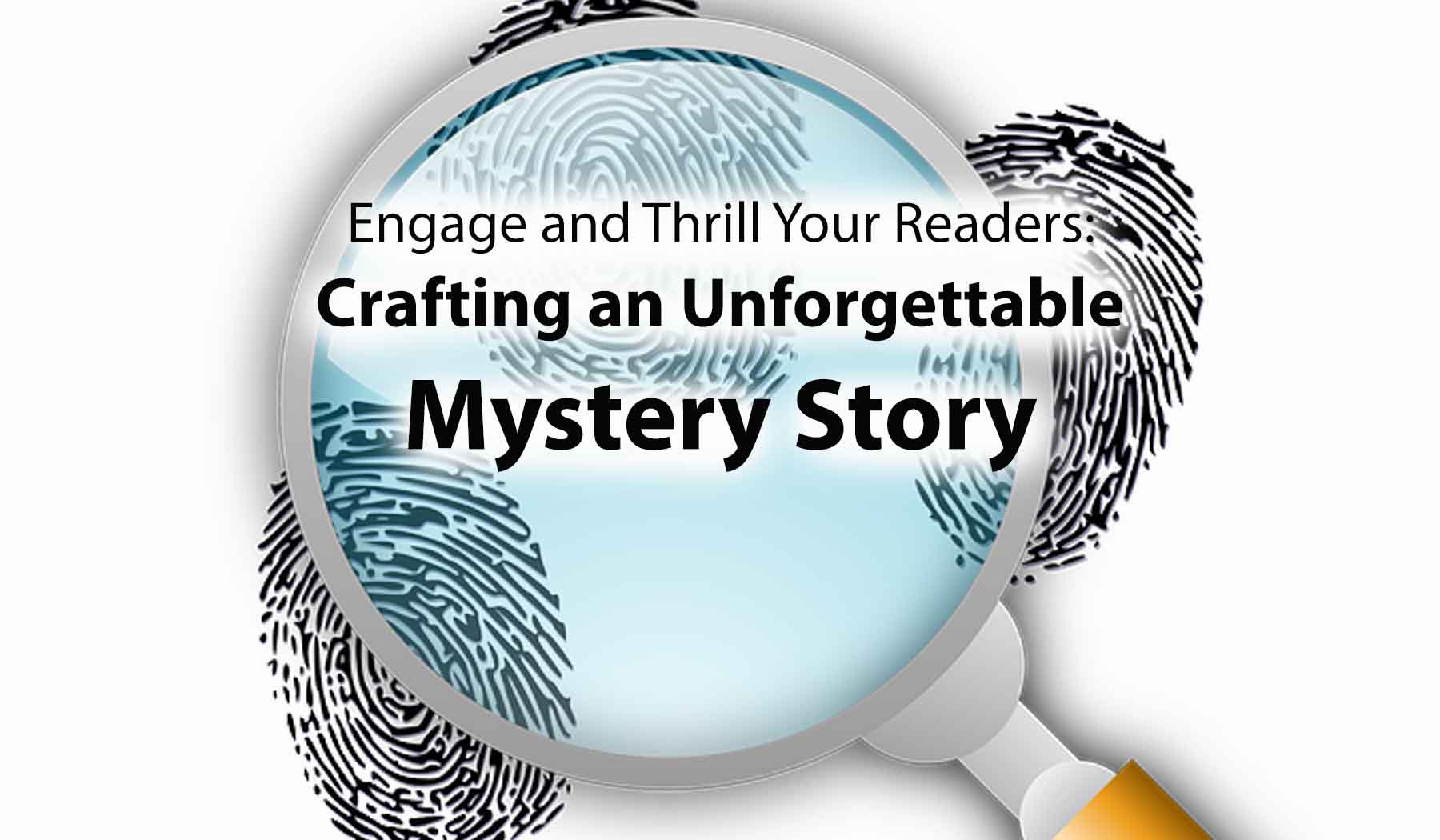Writing a mystery story is like embarking on a thrilling adventure, where you have the power to captivate readers and keep them on the edge of their seats.
Whether you’re an aspiring author or a seasoned writer looking to master the art of mystery, this comprehensive guide will provide you with valuable tips and techniques to craft a gripping mystery story that will leave your readers craving for more. Let’s dive in!
1. Start with a Strong Foundation
To create a mystery story that stands out, you need to lay a solid foundation.
Here are some key elements to consider:
- Compelling Characters: Develop well-rounded characters with unique personalities, strengths, and flaws. Make sure they have strong motivations and a stake in the mystery’s outcome.
- Engaging Setting: Choose a setting that complements the tone of your story. Whether it’s a bustling city or a remote countryside, vividly describe the surroundings to immerse readers in the atmosphere.
- Puzzling Plot: Craft a well-structured plot with twists and turns that keep readers guessing. Plan out the major events, clues, and red herrings in advance to maintain a coherent narrative.
2. Establish the Crime and Hook Your Readers
The opening of your mystery story should immediately grab your readers’ attention and set the stage for the thrilling journey ahead.
Consider the following techniques:
- The Inciting Incident: Start with a bang by introducing the crime or the event that kicks off the mystery. It could be a murder, a disappearance, or a theft. Make it intriguing and leave readers with questions they’re eager to have answered.
- Create Suspense: Engage readers by building suspense right from the beginning. Use descriptive language, evoke emotions, and hint at the potential dangers lurking in the shadows.
3. Develop Compelling Clues and Red Herrings
The core of any mystery story lies in the clues and red herrings that guide readers through the investigation.
Here’s how you can make them more engaging:
- Scatter Clues Strategically: Place clues at pivotal moments throughout the story. They can be physical evidence, witness testimonies, or even cryptic messages. Ensure they are discoverable but not too obvious, challenging readers to piece the puzzle together.
- Red Herrings: Introduce false leads and red herrings to add complexity and mislead readers. These deceptive elements will keep them guessing, doubting their own theories, and eager to uncover the truth.
4. Develop a Clever Detective or Protagonist
The detective or main character of your mystery story plays a crucial role in driving the narrative forward.
Consider the following when developing your protagonist:
- Unique Personality: Create a detective or protagonist with a distinctive personality that sets them apart from other characters. Think about their quirks, strengths, weaknesses, and personal struggles.
- Investigation Skills: Give your detective specialized skills or expertise that make them uniquely qualified to solve the mystery. This adds depth to their character and enhances their credibility as a solver of puzzles.
- Character Arc: Allow your detective to grow and evolve throughout the story. Let them face challenges, confront their own flaws, and ultimately learn valuable lessons.
5. Craft an Unforgettable Resolution
A satisfying resolution is the key to leaving a lasting impression on your readers.
Follow these guidelines:
- The Reveal: When the moment of truth arrives, make sure the resolution is logical and well-supported by the clues presented earlier. Avoid introducing last-minute plot twists that come out of nowhere.
- Tie Up Loose Ends: Address any unanswered questions or loose ends to provide a sense of closure. Readers should feel that the mystery has been solved and all important plot points have been addressed.
- Emotional Impact: Consider the emotional impact of the resolution on your characters and readers. It’s essential to create a satisfying and emotionally resonant ending that leaves a lasting impression.
6. Pace Your Story Effectively
Maintaining the right pace is crucial in keeping readers engaged and invested in your mystery story.
Here’s how to achieve an effective pacing:
- Balancing Action and Investigation: Alternate between moments of intense action and quieter investigative scenes. This variation in pace adds excitement and allows readers to catch their breath while still keeping them engrossed.
- Reveal Information Gradually: Release information and unveil clues gradually, allowing readers to piece the puzzle together alongside the detective. This keeps them actively involved and curious about what’s to come.
- Well-Timed Twists: Introduce plot twists at strategic points in the story to keep readers on their toes. These unexpected turns should be carefully placed to maintain tension and sustain interest.
7. Create Engaging Dialogue and Interactions
Dialogue and interactions between characters can enhance the depth of your mystery story.
Consider the following tips:
- Distinctive Voices: Develop unique voices for each character to make their dialogues more engaging and authentic. Consider their backgrounds, personalities, and motivations when crafting their speech patterns.
- Subtext and Conflict: Infuse dialogues with subtext and hidden meanings, creating tension and conflict between characters. This adds complexity to their relationships and keeps readers intrigued.
- Revealing Information: Use dialogue as a tool to reveal important information or unveil character traits. Engage readers by making them active participants in deciphering hidden clues within conversations.
8. Edit and Polish Your Work
Once you’ve completed the first draft, the editing process is crucial to refining your mystery story.
Consider the following steps:
- Structural Editing: Evaluate the overall structure, pacing, and plot coherence of your story. Ensure that each scene contributes to the mystery and moves the story forward.
- Character Development: Review your characters’ arcs and motivations. Ensure their actions and decisions are consistent and believable throughout the story.
- Clarity and Tension: Tighten your prose to enhance clarity and maintain a sense of tension. Remove any unnecessary details or repetitive information that may slow down the pacing.
- Proofreading: Carefully proofread your work for grammar, spelling, and punctuation errors. Mistakes can distract readers and undermine the professionalism of your writing.
9. Engage Readers with Compelling Descriptions
Immerse your readers in the world of your mystery story through vivid and captivating descriptions.
Consider the following techniques:
- Sensory Details: Appeal to readers’ senses by incorporating sensory details. Describe sights, sounds, smells, tastes, and textures to bring your settings and scenes to life.
- Atmosphere and Mood: Use descriptive language to create a specific atmosphere and mood that aligns with the tone of your mystery story. Whether it’s eerie, suspenseful, or gritty, make readers feel the ambiance.
- Symbolism: Incorporate symbolic elements that deepen the meaning of your story. Objects or settings can carry hidden messages or foreshadow events, adding layers of intrigue for readers to discover.
10. Read Widely and Study the Masters
To become a master of mystery storytelling, it’s essential to immerse yourself in the genre.
Here are a few tips:
- Read Extensively: Read a wide range of mystery novels across different subgenres and eras. Pay attention to how authors structure their plots, create suspense, and develop memorable characters.
- Study Craft Books: Explore books on writing craft that specifically focus on mystery or suspense storytelling. Learn from established authors who share their insights and techniques.
- Analyzing Techniques: Analyze the techniques used by renowned mystery authors. Study their use of foreshadowing, plot twists, pacing, and character development. Apply these lessons to your own writing.
- Join Writing Communities: Engage with fellow writers and join writing communities, both online and offline. Participate in workshops, critique groups, and forums to receive feedback on your work and learn from others’ experiences.
Keep Readers Guessing until the Very End
Crafting a mystery story that grips readers requires careful planning, strategic pacing, well-developed characters, and a satisfying resolution.
By following the tips and techniques outlined in this guide, you’ll be well-equipped to embark on your own journey of writing a captivating mystery.
Remember, practice makes perfect, so keep honing your skills, experimenting with different approaches, and most importantly, enjoy the process of weaving a tale that will keep readers guessing until the very end.









